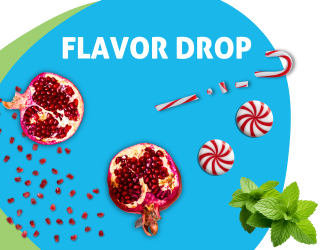 CHICAGO — Nearly 5% of all food sold in the United States in 2015 was organic, according to the Organic Trade Association (O.T.A.), Washington. Most of that is from perimeter departments in retail stores.
CHICAGO — Nearly 5% of all food sold in the United States in 2015 was organic, according to the Organic Trade Association (O.T.A.), Washington. Most of that is from perimeter departments in retail stores.
“Farm-fresh foods — produce and dairy — are driving the market,” said Laura Batcha, O.T.A.’s executive director and chief executive officer. “Together they account for more than half of total organic food sales.”
It is easy for shoppers to make the connection between agricultural practices used in the field and fresh, perishable foods. However, as consumers increasingly crave convenience and flavor adventure, they are looking beyond these departments to the packaged and prepared foods aisles for organic offerings. Marketers are responding as quickly as possible.
The challenge is sourcing ingredients. The U.S. Department of Agriculture (U.S.D.A.) requires certified organic products to have at least 95% organic ingredients in order to sport the official organic seal. There is an approved National List of allowed non-organically produced agricultural-based ingredients for use in organic-certified foods. A number of essential ingredients for many packaged foods are not on that list.
Herbs and spices, for example, are not. This means foods certified organic only may contain organically certified herbs and spices, which are in a limited supply.
Organic mainstream ingredients, such as the wheat for pasta, chicken for soup and oil for vinaigrette, are also in limited supply. Manufacturers are hopeful that investments in domestic and overseas organic farming will increase supply of organic food ingredients for innovative product development.
Despite double-digit growth in consumer demand for organic foods every year since the 1990s, organic acreage has not kept up, according to the U.S.D.A. Less than 1% of U.S. farmland is certified organic. While farmers increasingly seek to recognize the benefits of certification, converting fields from conventional farming methods to organic takes at least three years and is no small feat. During the three-year transition, farmers use organic practices but are not paid organic prices.
“Building an organic supply chain is a challenge given the restriction on organic acreage and the learnings required for perfecting agricultural production in an organic system,” said Joelle Mosso, product line manager-natural and organic, Olam Spices and Vegetable Ingredients, Fresno, Calif. “For suppliers to the industry, there is always a level of uncertainty on the volume that the market can support for any given organic ingredient.”
Felipe Aguilar, director of supply chain, Sensient Natural Ingredients, Turlock, Calif., said, “Ingredient suppliers face highly fragmented organic supply chains that prove difficult to demonstrate traceability, maintain reliable inventories and provide consistency in product quality. Food manufacturers who use organic ingredients need to ensure they focus on communicating their anticipated needs well in advance. Remember, most crops produce only once every 12 months, thus limiting flexibility and ability to supply in short notice.”
For many food manufacturers, the motto is, “if you supply it, we will use it.” But it’s not just supply. A consistent and sufficient supply must also be considered.
“There are several factors that make sourcing organic ingredients challenging,” said Ilana Orlofsky, marketing coordinator, Imbibe, Niles, Ill. “First and foremost, there simply might not be a crop available in the quantity that brands demand. In addition, crops vary season to season and year to year. Taste profiles may differ, which makes it harder to create a standardized, uniform product.”
Determined marketers are willing to take that chance to meet the organic consumer’s needs. For example, demand for fresh organic salads inspired Ready Pac Foods Inc., Irwindale, Calif., to develop a line of chef-inspired organic chopped salad kits. The company goes to great efforts to source everything organic. In the Kickin’ Southwest variety, this includes romaine, green and red cabbage, carrots, tortilla strips, Monterey Jack cheese and Southwest ranch dressing.
Read the full story on Food Business News.



